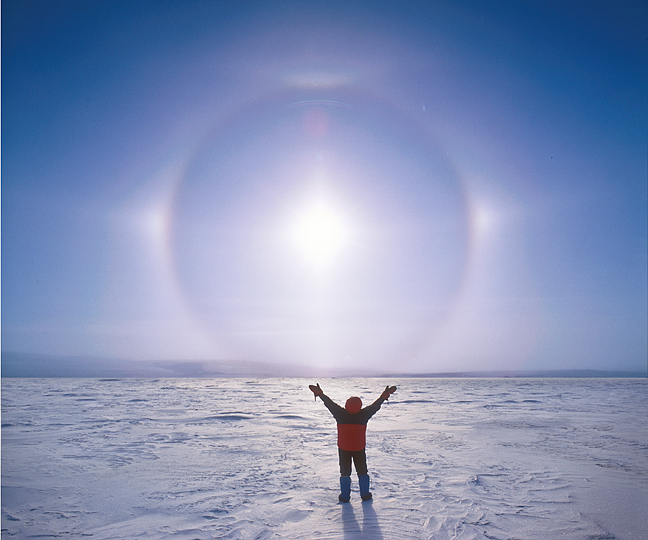Beautiful Visions in the Winter Sky: The Perfect Mix of Light and Ice

When winter arrives, the skies often unveil mesmerizing and mysterious phenomena that captivate our imagination. Among the most enchanting sights are sundogs, halos, and sun pillars, which have been mistaken for UFOs on numerous occasions. However, these stunning occurrences have a scientific explanation that lies in the interplay of light and ice crystals present in the atmosphere.

One such phenomenon, sundogs, also known as mock suns or parhelia, manifests as colored spots of light at approximately 22 degrees on either side of the sun. This positioning depends on the presence and orientation of ice crystals in the air. As sunlight passes through these crystals, it is refracted, creating a dazzling display of colors similar to rainbows.
Halos are another striking optical effect seen in winter skies. These are white rings that encircle the sun or moon, appearing when sunlight or moonlight refracts off ice crystals in a thin veil of cirrus clouds. The result is a captivating sight that has sparked awe and wonder for generations.

Sun pillars, on the other hand, resemble vertical shafts of light extending above the sun, typically visible during dawn or dusk. These pillars form as a result of ice crystals slowly falling through the air and reflecting the sun’s rays, producing a mesmerizing visual spectacle.
Experts from the National Weather Service explain that all these winter phenomena, including halos, sundogs, and sun pillars, are optical effects resulting from the refraction of light by water drops and ice crystals in the atmosphere. When light passes through these tiny ice particles, they act as prisms, splitting the light into its various colors, creating the beautiful displays we witness in the winter sky.

Recently, social media has been flooded with awe-inspiring images of these atmospheric marvels taken in the North Carolina mountains. Grandfather Mountain, a park in the region, shared numerous photos of rainbow-like formations encircling the sun against an otherwise clear sky. Similar mirages were observed in other areas like Boone and Banner Elk, captivating residents and visitors alike.
Despite their scientific explanations, the allure of these winter visions remains undiminished. The delicate dance of light and ice in the atmosphere continues to evoke wonder and imagination, leaving people in awe of the beauty of nature.

So, the next time you catch a glimpse of a sundog, halo, or sun pillar in the winter sky, remember that it’s not an otherworldly visitor but a stunning play of light and ice, reminding us of the countless wonders that the natural world has to offer.






